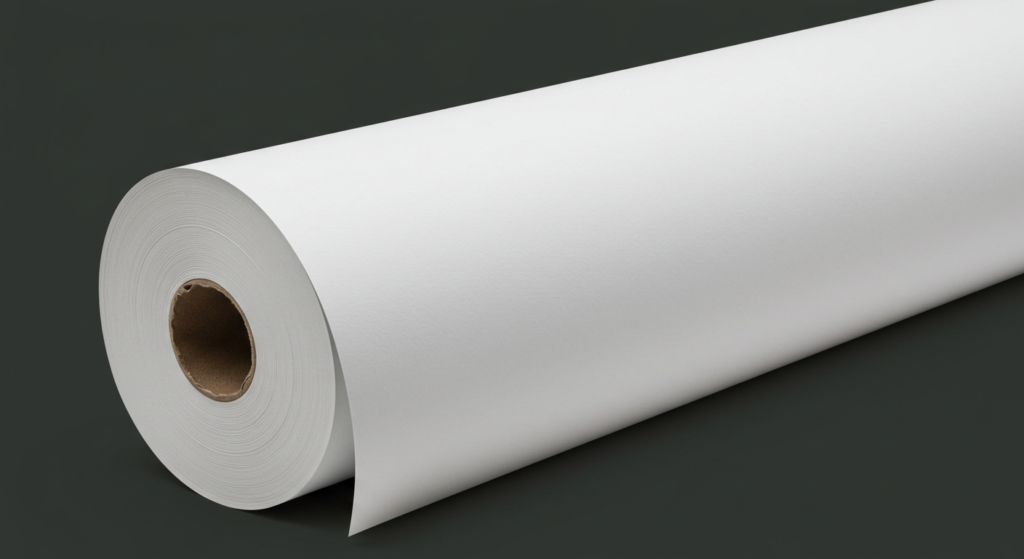What is Matte Coated Paper?
Ever picked up a high-quality magazine and noticed that smooth, non-glossy finish? That’s matte coated paper at its finest! This specialized paper type features a unique coating that sets it apart from both glossy and uncoated alternatives. Unlike its glossy cousin, matte coated paper offers a sophisticated, understated elegance that’s become increasingly popular in professional printing.

Manufacturing Process
Think of matte coated paper as a canvas that’s been given a special treatment. The process begins with high-quality base paper, which then undergoes a sophisticated coating process. Manufacturers apply a thin layer of clay and other minerals to the paper’s surface, then calendar it to achieve that characteristic smooth, flat finish. It’s like giving the paper a sophisticated makeover!
The coating process involves multiple stages, each contributing to the final product’s quality. The base paper passes through coating stations where specialized equipment applies precise amounts of coating material. This material typically includes clay, calcium carbonate, and binding agents. After coating, the paper goes through a complex drying and finishing process to ensure uniform coverage and optimal performance.
Key Properties and Characteristics
Surface Texture
The surface feels smooth but not slick – imagine running your fingers over a perfectly painted wall. This unique texture provides excellent print clarity while reducing glare. The matte finish creates a perfect balance between smoothness and grip, making it ideal for both visual appeal and practical handling.
The texture also plays a crucial role in how light interacts with the paper. Unlike glossy papers that reflect light directly, matte coated paper diffuses light, creating a more pleasant viewing experience, especially under bright lighting conditions.
Print Quality
When it comes to print quality, matte coated paper is like a master chef’s favorite pan – it just makes everything better. The coating allows for sharp, crisp images with minimal ink absorption. This results in:
- Enhanced color accuracy
- Better detail reproduction
- Improved contrast
- Consistent ink coverage
- Superior text sharpness
Applications and Uses

Professional Printing
From annual reports to art portfolios, matte coated paper shines in professional applications. Its versatility makes it suitable for various printing methods, including:
- Offset printing
- Digital printing
- Screen printing
- UV printing
Common applications include:
- Marketing materials and brochures
- High-end product catalogs
- Art books and photography portfolios
- Corporate annual reports
- Premium magazines
- Business cards and stationery
- Exhibition materials
- Premium packaging
Advantages and Disadvantages
Let’s dive deeper into the pros and cons of matte coated paper:
Advantages:
- Superior readability in various lighting conditions
- Professional, sophisticated appearance
- Excellent color reproduction and consistency
- Better durability compared to uncoated papers
- Reduced fingerprint visibility
- Ideal for both images and text
- Good writability with certain pen types
Disadvantages:
- Higher cost compared to uncoated alternatives
- Less vibrant color reproduction than glossy papers
- More sensitive to moisture and humidity
- May require special handling during printing
- Limited compatibility with certain printing technologies
Buying Guide
Quality Indicators
When selecting matte coated paper, consider these important factors:
Paper Weight:
- Text weight (70-100 gsm) for general printing
- Medium weight (120-170 gsm) for brochures
- Heavy weight (200+ gsm) for covers and cards
Surface Properties:
- Coating uniformity
- Brightness level (typically 90-98)
- Opacity rating
- Smoothness measurement
Environmental Considerations:
- FSC certification
- Recycled content percentage
- Sustainable manufacturing processes
- Chemical-free coating options
Frequently Asked Questions
- How does matte coated paper differ from glossy paper?
Matte paper has a non-reflective finish that reduces glare and provides a more sophisticated look, while glossy paper has a shiny surface that enhances color vibrancy but can be difficult to read under bright lights. - Can I use matte coated paper in my home printer?
Yes, but check your printer specifications first. Look for paper specifically designed for your printer type (inkjet or laser) and follow the manufacturer’s recommendations for paper weight. - How should I store matte coated paper?
Store in a cool, dry place away from direct sunlight, ideally at room temperature (68-72°F) and 45-55% relative humidity. Keep paper in its original packaging until use. - Is matte coated paper more expensive than uncoated paper?
Generally yes, due to the additional manufacturing processes involved in applying and perfecting the coating. However, the superior print quality and professional appearance often justify the higher cost. - Can I write on matte coated paper?
Yes, though some pen types work better than others. Ball-point pens and certain gel pens typically work well. Test your preferred writing instrument on a sample sheet first.